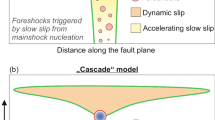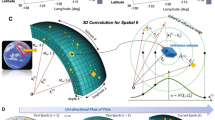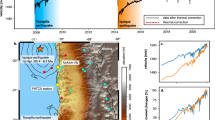Abstract
AN earthquake is usually distinguished by the name of the town, province, or country, near or within which it originates, and by its date—the double nomenclature serving to determine its position in space and time. With regard to the latter element, absolute uniformity prevails. The year, month, and day are always given, except for great and long-past earthquakes, for which the year only is sufficient. My object in this letter is to suggest the desirability of similar uniformity in the use of the place-name.
This is a preview of subscription content, access via your institution
Access options
Subscribe to this journal
Receive 51 print issues and online access
$199.00 per year
only $3.90 per issue
Buy this article
- Purchase on SpringerLink
- Instant access to full article PDF
Prices may be subject to local taxes which are calculated during checkout
Similar content being viewed by others
Author information
Authors and Affiliations
Rights and permissions
About this article
Cite this article
DAVISON, C. The Naming of Earthquakes . Nature 96, 566 (1916). https://doi.org/10.1038/096566a0
Issue date:
DOI: https://doi.org/10.1038/096566a0



